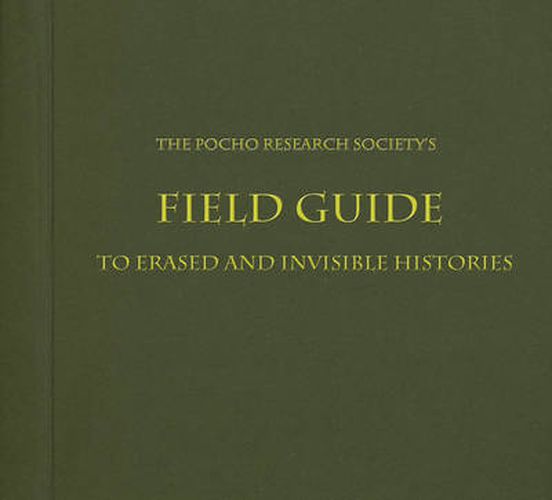Readings Newsletter
Become a Readings Member to make your shopping experience even easier.
Sign in or sign up for free!
You’re not far away from qualifying for FREE standard shipping within Australia
You’ve qualified for FREE standard shipping within Australia
The cart is loading…






Visual and performance artist Sandra de la Loza presents a wry commentary on the Chicano history of Los Angeles in this field guide to Downtown and East Los Angeles. Using the format of the photographic essay, she documents the exploits of the Pocho Research Society, an organization dedicated to commemorating sites in Los Angeles that are of importance to the Chicano community but that have been erased by urban development or neglect. Through the unauthorized acts of commemoration, the Pocho Research Society calls our attention to their absence from official narratives.
The field guide also offers playful tours of the murals at Estrada Courts and the Fort No Moore Secret Museum, founded by the Pocho Research Society to preserve the history of the Fort Moore Pioneer Memorial (a history that includes accounts of the Lizard People, who lived in catacombs far beneath the monument).
By drawing attention to these invisible monuments and lost histories, de la Loza asks her readers to consider the broader question of what constitutes a community’s history.
$9.00 standard shipping within Australia
FREE standard shipping within Australia for orders over $100.00
Express & International shipping calculated at checkout
Visual and performance artist Sandra de la Loza presents a wry commentary on the Chicano history of Los Angeles in this field guide to Downtown and East Los Angeles. Using the format of the photographic essay, she documents the exploits of the Pocho Research Society, an organization dedicated to commemorating sites in Los Angeles that are of importance to the Chicano community but that have been erased by urban development or neglect. Through the unauthorized acts of commemoration, the Pocho Research Society calls our attention to their absence from official narratives.
The field guide also offers playful tours of the murals at Estrada Courts and the Fort No Moore Secret Museum, founded by the Pocho Research Society to preserve the history of the Fort Moore Pioneer Memorial (a history that includes accounts of the Lizard People, who lived in catacombs far beneath the monument).
By drawing attention to these invisible monuments and lost histories, de la Loza asks her readers to consider the broader question of what constitutes a community’s history.